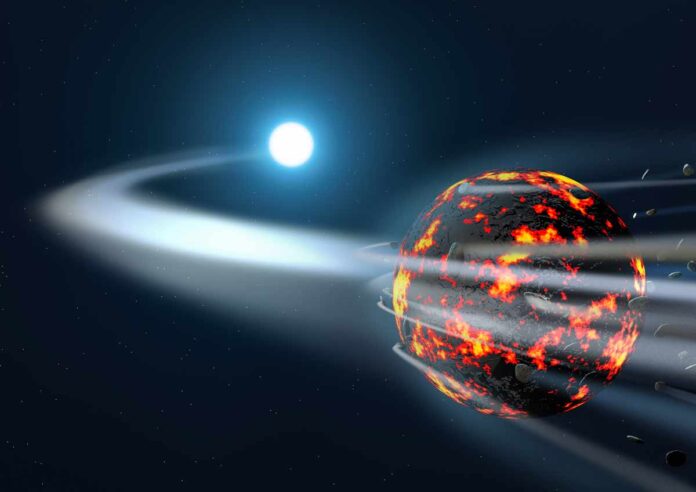Astronomers have discovered evidence that planetary formation can begin very quickly after the birth of a star. This incredible insight into the histories of planetary systems comes from white dwarfs, the dying remnants of the cores of stars like our Sun, rather than from newborn stars.
Sun-like stars that have evolved into red giants are not massive enough to explode as supernovae. They will eventually lose their outer layer, and their core will collapse into a white dwarf. These objects typically have pristine helium and hydrogen atmospheres. But some of them become polluted as bits of planets that used to orbit the stars in question fall onto them.
It is possible to learn a lot by studying these polluted white dwarfs. Last week, scientists announced the discovery of the remains of the Milky Way’s oldest known planet. This new study discovered evidence that planets and stars form almost simultaneously.
Stars are born in nebulae, which are mostly made of hydrogen and sprinkled with ice and dust grains. Gravitational instabilities eventually cause chunks of these nebulae to collapse into many stars. The grains eventually become pebbles, then planetesimals, which collide and merge to form planets.
The researchers examined 202 cool white dwarfs and discovered evidence consistent with the differentiation process. This occurs in melted space objects. It explains why there is so much iron at the Earth’s core: it simply sinks there. The melting of these asteroid-like chunks of future planets was most likely caused by some short-lived radioactive elements. These only exist for a few million years, indicating that this process must have occurred very quickly.
“Our study adds to a growing body of evidence that planet formation began early. With the first bodies forming concurrently with the star,” said first author Dr. Amy Bonsor of Cambridge’s Institute of Astronomy in a statement. “Analysis of polluted white dwarfs indicates that this radioactive melting process is a potentially ubiquitous mechanism. It influences the formation of all extrasolar planets.”
This implies that planets like Jupiter and Saturn had plenty of time to grow large. There are still questions about how planets formed. But research at both ends of the stellar system’s timeline is yielding new insights.
“This is just the beginning. With each new white dwarf discovered, we can gather more evidence and learn more about how planets form.” “Dr. Bonsor elaborated. “We can trace elements like nickel and chromium to determine the size of an asteroid when it formed its iron core. It’s incredible that we can study processes like this in exoplanetary systems.”

